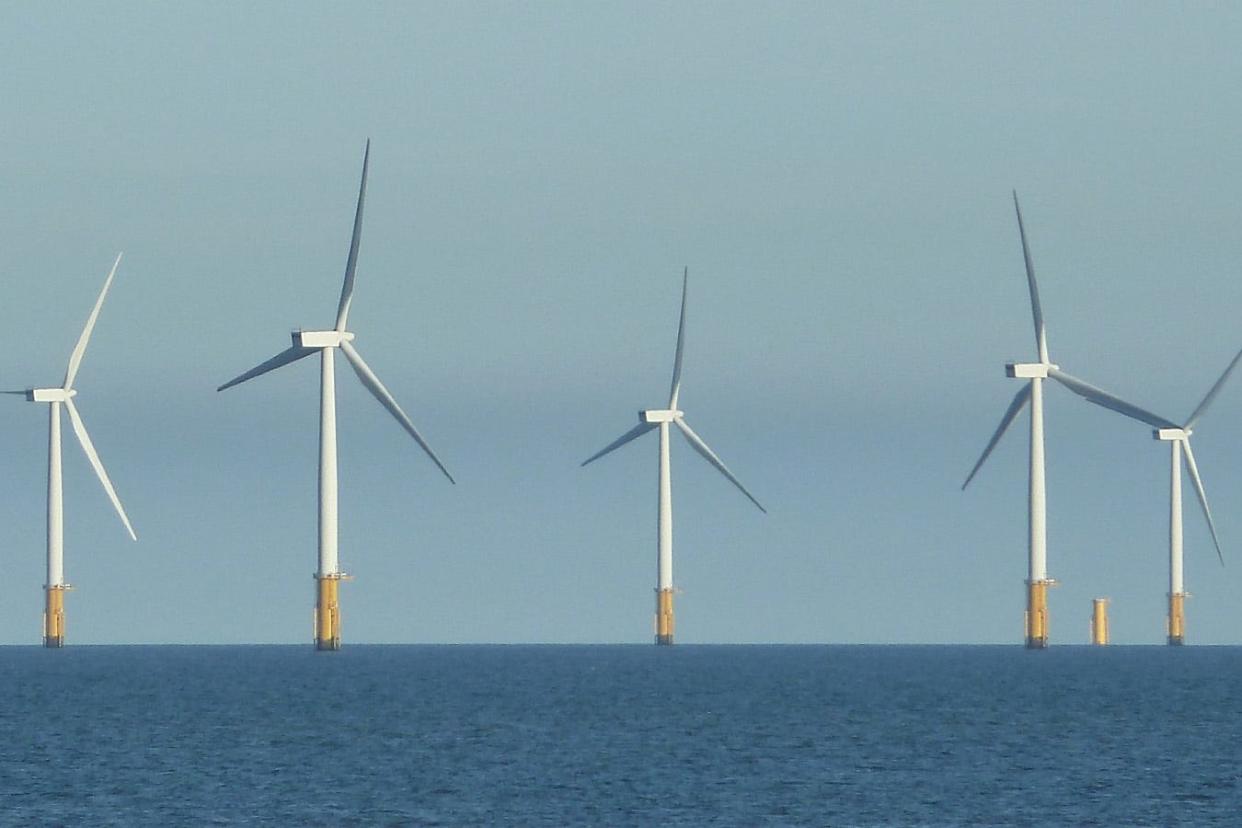Thanks to Duke Energy, offshore wind is blowing back into NC's clean energy picture

From concerns about financing to potential impacts on the highly endangered North Atlantic right whale, developers of offshore wind projects had to navigate some rough waters in 2023.
That stormy weather included efforts by companies to renegotiate their contracts with utilities due to rising construction costs, higher inflation and supply chain disruptions, and the war in Ukraine. Those headwinds culminated in some developers deciding to walk away from projects rather than get stuck in money-losing endeavors.
But the winds now seem to be blowing in the renewable energy sector's favor, including for a pair of wind farms planned for the waters just south of Brunswick County.
Late last year, a 132 megawatt (MW) project off New York's Long Island became the first offshore wind farm in the country to start sending power onshore. Parts of another wind farm off Massachusetts came online in early January.
Then in late January Duke Energy, citing a projected massive increase in future demand on its power grid, announced it was moving forward with plans to add 2.4 gigawatts (GW) of offshore wind to its grid in the 2030s as part of its updated carbon plan. The plan maps out proposed roadmaps for the utility giant to meet North Carolina's future power needs while also reducing carbon emissions from the state's energy sector, with a goal of reaching net-zero emissions by 2050.
Duke's commercial renewables arm and Total Energy Renewables in 2022 secured neighboring leases from the U.S. Bureau of EM to build offshore wind farms in the open ocean about 18 miles south of Bald Head Island. Duke has said its 54,000-acre site, which it paid the federal government $155 million to lease, could support 1.6 gigawatts of wind power.
While the two companies teamed up for some survey work in the proposed project areas last summer, it will still be years before any giant wind turbines start rising from the Brunswick waters.
Still, the steps from getting U.S.-based wind farms generating power to Duke's decision to add offshore wind to its future power grid needs are all important moves in the right direction, said Katharine Kollins, president of the Southeastern Wind Coalition.
"Offshore winds needs to be a key component if we're going to meet the decarbonizing requirements outlined in House Bill 951," she said, referring to the 2021 legislation that enshrined the state's emission-reducing carbon plan into law. "You cannot do that without offshore wind."

SPARKING AHEAD: More natural gas, offshore wind, and higher customer bills in Duke's revised energy plan
In its updated carbon plan filing with the N.C. Utilities Commission, Duke notes that a lot of financial uncertainties still surround offshore wind − especially when trying to project capital development and operating costs a decade or more out for these complicated, capital-intensive projects.
But Kollins said a lot of the information that any new study would require could be gleamed from the increasing number of wind farms that are coming online in the coming years, including the Kitty Hawk Wind energy area that's been under development off the Outer Banks since 2017. She added that some information that a wind farm developer would require to move forward, such as status of the sea floor around a proposed project along with wind and weather data, also could start being gathered now instead of later, allowing projects to move into the development phase that much faster.
Preliminary work on securing infrastructure that can take long lead-in times, like undersea cables and substations, also could be initiated with developers as well as starting the conversation on permitting and rates rather than waiting.
“It’s time and certainty, and that’s what these projects need right now," Kollins said. "They need to know that North Carolina is a market, a reliable market for wind energy.”
GETTING UNDERWAY: With an eye out for whales, survey work starts on offshore wind farms south of Wilmington

Reporter Gareth McGrath can be reached at GMcGrath@Gannett.com or @GarethMcGrathSN on X/Twitter. This story was produced with financial support from the Green South Foundation and the Prentice Foundation. The USA TODAY Network maintains full editorial control of the work.
This article originally appeared on Wilmington StarNews: Offshore wind is back in NC's clean energy picture
